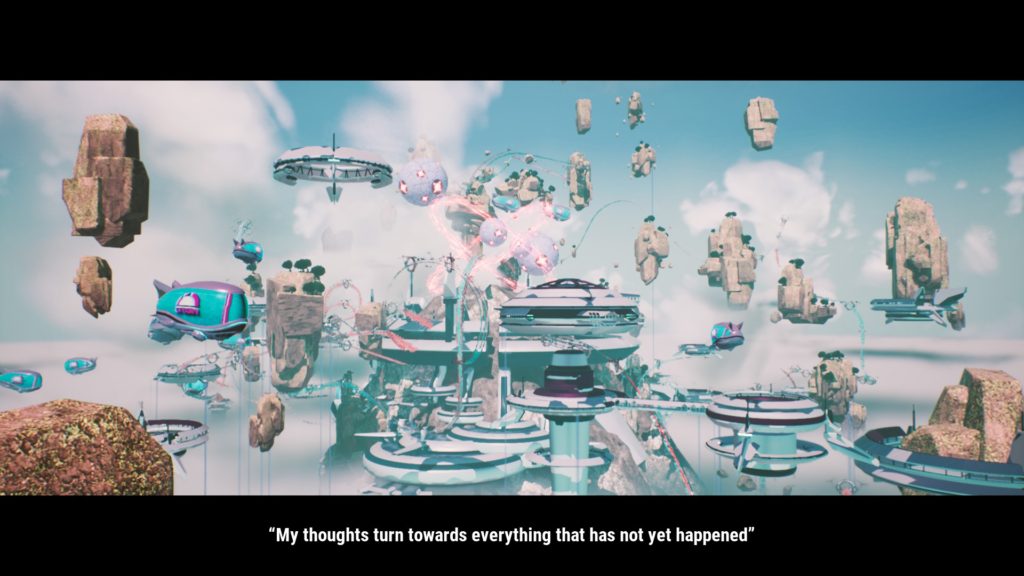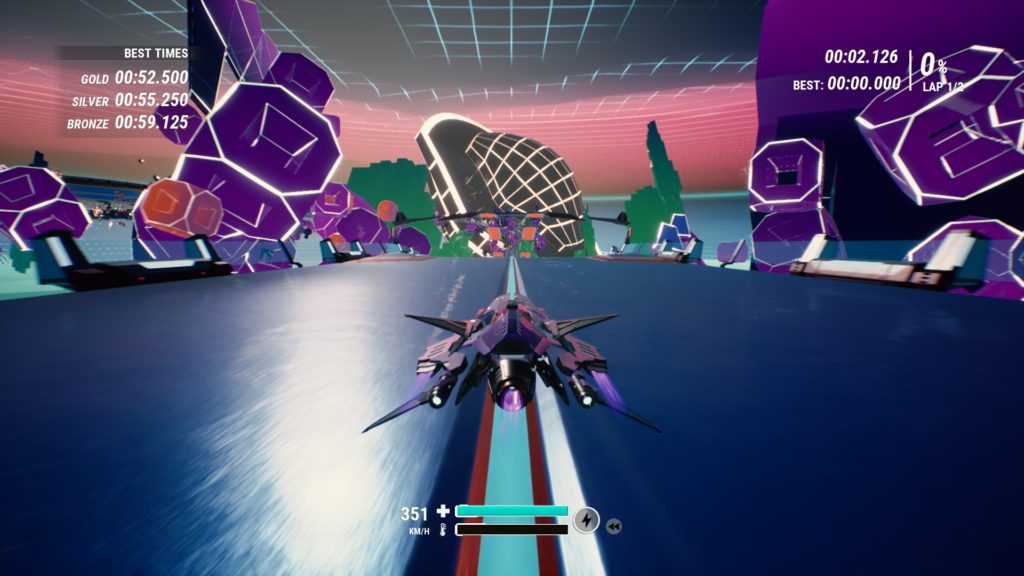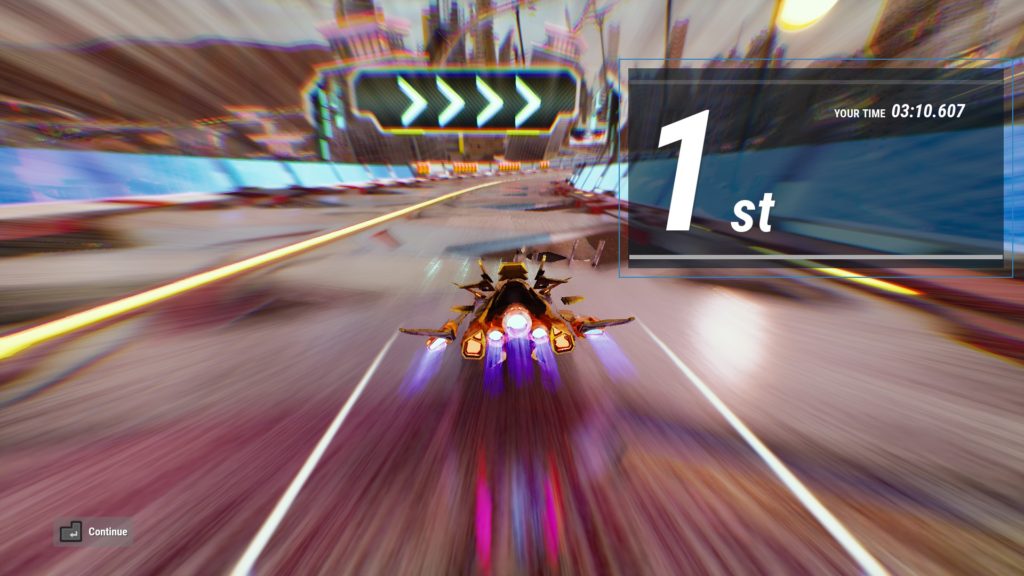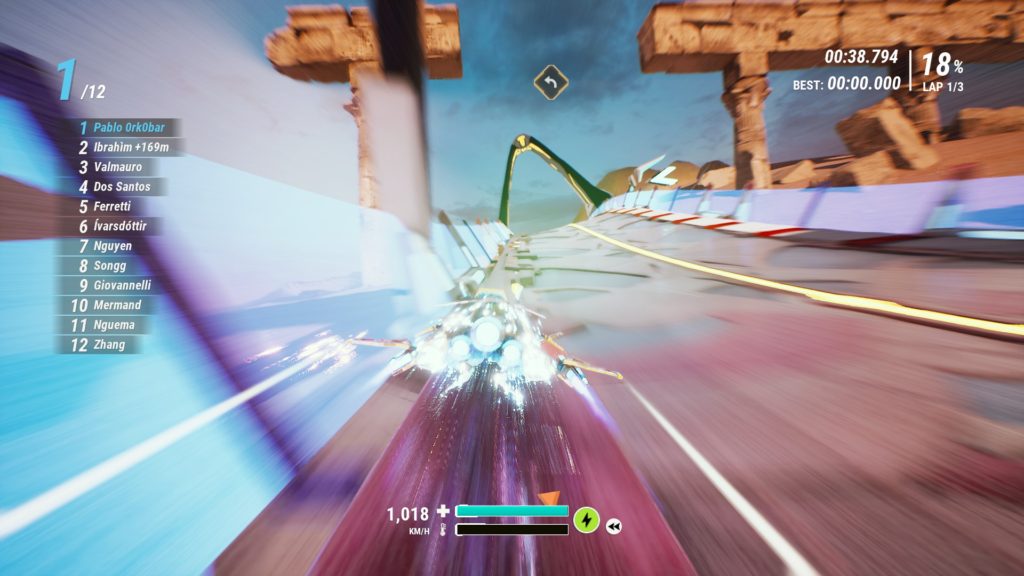I remember the racing genre truly hitting the initial sweet spot with games like Need For Speed, Gran Turismo and Burnout. Back in the day, we used to visit nearby arcades to play platformers and racing games. This popularly gave birth to the genre of arcade racers – racing games built to be played on arcade machines. Later on, more games tried to take up the mantle of arcade racing, but with the genre shifting more towards an open-world format, it was difficult for arcade racers to keep up. A few years back, I had seen Sonic And All-Stars Racing – an arcade racing simulator in the Sonic universe – try to make its mark in a world dominated by bland open-world racing games. More recently, Hot Wheels Unleashed came out, reigniting the spark that the arcade machines inspired back when I was small. Another title came out that took the inspiration from the innovative tracks of Hot Wheels Unleashed and splashed a coating of extreme sports (more like extreme racing) on it. Yeah, I’m talking about Redout 2 – the successor to the highly popular arcade racer known for its super-fast gameplay.

Plenty of Lore, But No Story
Redout 2 is a fast-paced racing game that takes the fight to some of the weirdest designed tracks in all of the galaxy. Being an arcade racer, the game completely eliminates the need for any story of any sort. The “Career” mode focuses on the player’s mastery of the game as they slide through tracks, learning more about what arcade racing is all about. It’s more of a less elaborate tutorial to help you perform better in the “Arcade” mode, the “actual” mode that any racing fan cares about. If you wanted something like Need For Speed : Hot Pursuit where you unlock stuff as you progress – I’d dare say you’d have to tune in your expectations. The game was made as a de-facto successor to the arcade racing game F-Zero – one of the greatest racing games to embrace the console ecosystem in the 90s.

If you’re disappointed by how the “Career” mode was designed and want to skip it entirely – I won’t really blame you. However, there is some neat stuff that you can learn while on track in progression. For instance, strafe is configured to the left and right arrow keys by default, while turning is configured to A and D keys. Strafing is something that you are going to have to do a lot – especially on tight corners – so it’s best to just know the shortcuts from the top of your head. Obviously, using a controller is the optimal way to play the game.
Multiplayer itself remains locked until you progress to the B league in Career mode. I do not understand why progress has to be hidden behind something like this. Of course, this ensures only players with some experience get to hit the online circuit to make races more interesting – but I do not think that such a progress lock makes sense. At best, there should just be an explicit tutorial (instead of it being fused in the first few races of the Career mode) that has to be completed before one can hit the online circuit.

While there isn’t any story to explore, I did find it interesting to learn that there is a lot of lore behind the game. Every track has a history of its own, which becomes visible as trivia on the loading screens and before the race starts. The game is set in a dystopian future where humanity had colonized multiple planets beyond Earth (probably because Earth had become almost uninhabitable or something). There are a lot of post-apocalyptic vibes from some of the race tracks as well as in the tone of the stories narrated at the start of the race. I do feel it’s a brilliant way to get the audience hooked into the game – at least till they break their keyboards trying to navigate the tracks. The fact that spaceships are used instead of traditional vehicles itself is also because of the setting – something that the lore explains really well.

High Octane Racing (Done Right)
Redout is about “how fast and accurately can one go without making errors”. More often than not, you’d be handling cars and trying to make your way through difficult tracks that bend violently more than 180 degrees at once. There are various modes for you to test out on each track till you get full mastery of the bends and curves and whatnot. I’d found the game modes where the player is the only one on the track to be the most relaxing – the races against AI or human opponents might feel stressful at times. The main reason is that the game did feel a bit too fast for my taste. Redout always was known for its high-octane racing, but the sequel does seem to have made it harder to navigate tracks, overall. However, the game has been made keeping its core audience in mind, so I can’t say I’m surprised there. It might take quite a few tries on a single track before you get the hang of it.
Redout 2 definitely takes the players to their limits as they navigate difficult tracks at speeds almost close to the speed of sound. One misclick or even a mistimed click and you’re out of the track, forced to start behind everyone else. That’s the beautiful (and the stressful) part of playing the game. The game does outdo its prequel by a long margin, as tracks have way more difficult bends and jump that need to be navigated carefully. Moreover, tracks also have fewer railings on their sides, which does mean that any spaceship that is close to the edges had better be careful – there’s always a chance of getting pushed out of the track.

The game’s difficulty is increased by the fact that nitro boost is also included in the game. A standard feature of most racing movies and games by now, nitro boost gives a sudden surge in speed from the nitrous exhausts on the vehicle. Most tracks do not have sections that are relatively straight – meaning that one has to navigate tight bends while the nitrous boost is turned on. This is even harder than it sounds, considering that navigating the bends is hard enough even when you’re not accelerating. Moreover, the fact that boosts can be used liberally does mean that if a player is knocked out of the track, they generally fall behind. Of course, boosts can be used to catch up with the other players, but the game’s high speed and the fact that other AI or human players in the race can use boosts as well makes it difficult to come back from one mistimed landing. That’s exactly where the races start becoming really brutal – either you stay ahead forever, or you go behind everyone. There’s almost nothing in between.

Motion Blur Unleashed
Redout 2 isn’t the most visually stunning or demanding game in the market. Graphics isn’t the main attraction of the game – the pain of having to reset a track a thousand times before a jump can be made properly is. Distant textures not loading is sometimes an issue when the introductory lore about the setting of a race track is being given. Also, for some weird reason, there’s no way to turn off the motion blur that kicks in when boost is triggered. I don’t know what game would not give an option to turn off motion blur.

What is really impressive about the game is probably its track design. You’d wonder how they made the tracks so intimidating yet so impressive. The tracks are especially what makes the game so special (and so difficult). The spaceship design is also really decent – something that I didn’t expect to see going into the game.

Real Talk
Redout 2 provides a unique arcade racing experience that few other games can compete with. If you find the modern trend of open-world racing games disturbing and want to try something a little different – this game’s definitely for you. If you’re a big fan of high-stakes racing, the high-octane experience provided by the game is sure to keep you stirring in your seat like a child. A fair word of warning – if you’re not willing to invest time in mastering the art of arcade racing at insane speeds, Redout 2 isn’t for you.
FINAL RATING: RECOMMENDED



